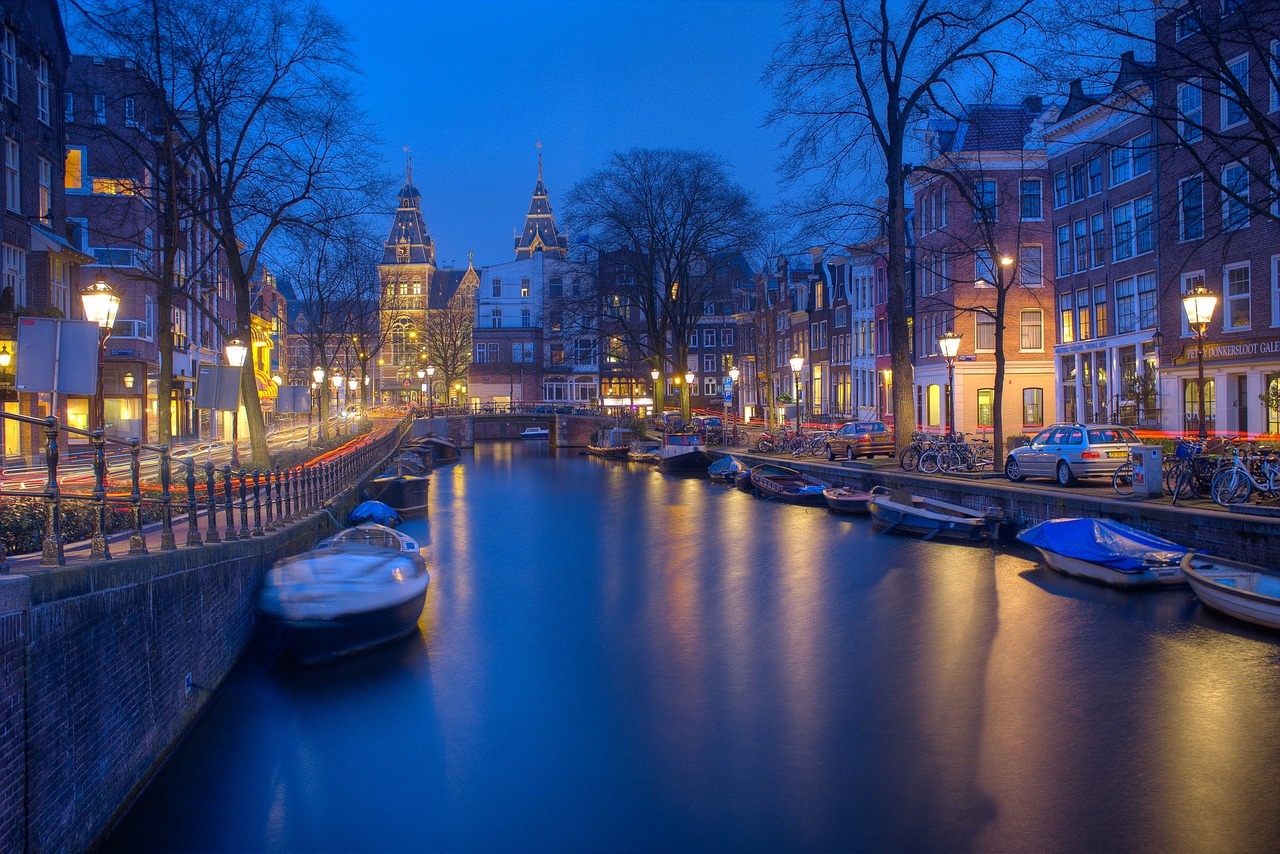
(Pixabay)

(Pixabay)
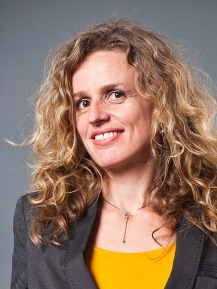
After growing up in the Netherlands — where about a third of land lies below sea level — Dr. Hebe Verrest has looked to other particularly wet nations in the Caribbean and South Asia for climate change solutions. There, she says, smart city experiments may hold the answer to global sea level rise.
Verrest is a human geographer and assistant professor at the University of Amsterdam and serves as a global advisor to the United Nations Global Compact Cities Programme. She focuses her research on the role of exclusion and inequality in fields like urban governance, climate change adaptation, and entrepreneurship.
(Editor’s note: This interview has been edited and condensed for clarity.)
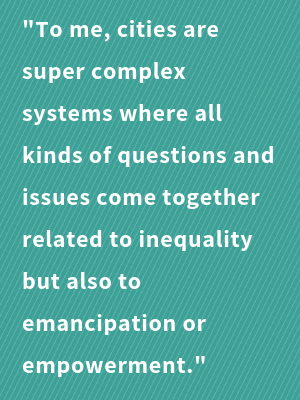 Q: What inspired you to research cities, particularly in the Caribbean and South Asia?
Q: What inspired you to research cities, particularly in the Caribbean and South Asia?
A: To me, cities are super complex systems where all kinds of questions and issues come together related to inequality but also to emancipation or empowerment. I particularly like being in cities because I always get questions about how people make a life here or the things they run into. I see all that diversity and contestation coming up so that’s what inspired me. Actually, the Caribbean was a coincidence. I started doing geography and I wanted to work on an urban topic and there was an option to work with a Ph.D. student in Suriname, in Paramaribo, so I thought, ‘Let’s go there.’ Then it transpired to me how unique these cities are, they are—generally speaking—quite small compared to other cities in other regions. They’re often less 100,000, and there’s very few that are larger than half a million. But they’re very dominant in their individual islands, countries. That was something that I thought: ‘That is special and it brings in its own dynamics and its own issues.’ Caribbean cities, they bring so much historical but also current issues related to inequality, race, and, increasingly, an environmental question. But I’ve also shifted to also include a bit more about Asian cities because I’ve become more interested in urban environmental issues. If you want to do anything with urban environmental issues, there is no way you should not focus at least a bit of your work on Asian cities. They bring in an extra complexity because of their magnitude.
Q: How are Asian cities particularly connected to environmental issues?
A: I’ve only been working there quite recently. I’m very interested in how particular urban floods work out. I’m actually trying to see how these occurrences, because it happens quite a lot, get framed and understood by different populations within a city as a potential risk, and how people navigate this risk. I’ve chosen to focus primarily on small and medium-sized businesses because that fits in with larger debates on the understanding whether an environmental risk is something absolute, separate from the individual person, or if it is a subjectively lived phenomenon. By focusing on small- and medium-sized entrepreneurs, you get a bit of an understanding. Many of these businesses flood all the time and they consider that part of what they do in their business. It’s something that they have also managed to control, in that they have found a way to continue their business. It’s the major erratic floods that they really consider a problem because they can’t control that. It was really an interest in the occurrence of floods. There (are) many reasons why areas flood, but it’s usually a combination of more extreme natural phenomenon and political and governance practices that produce, in the end, these kinds of floods. I moved there and I felt the magnitude of some of these Asian cities. I had been working with students in Jakarta and Metro Manila and Bangkok. The magnitude of these cities is of a completely different scale than Caribbean cities. By focusing on smaller cities, you sometimes have the idea that it’s more manageable than it would be in a larger city. But I’m not sure that that’s the case. That’s why the comparison is very interesting to carry out.
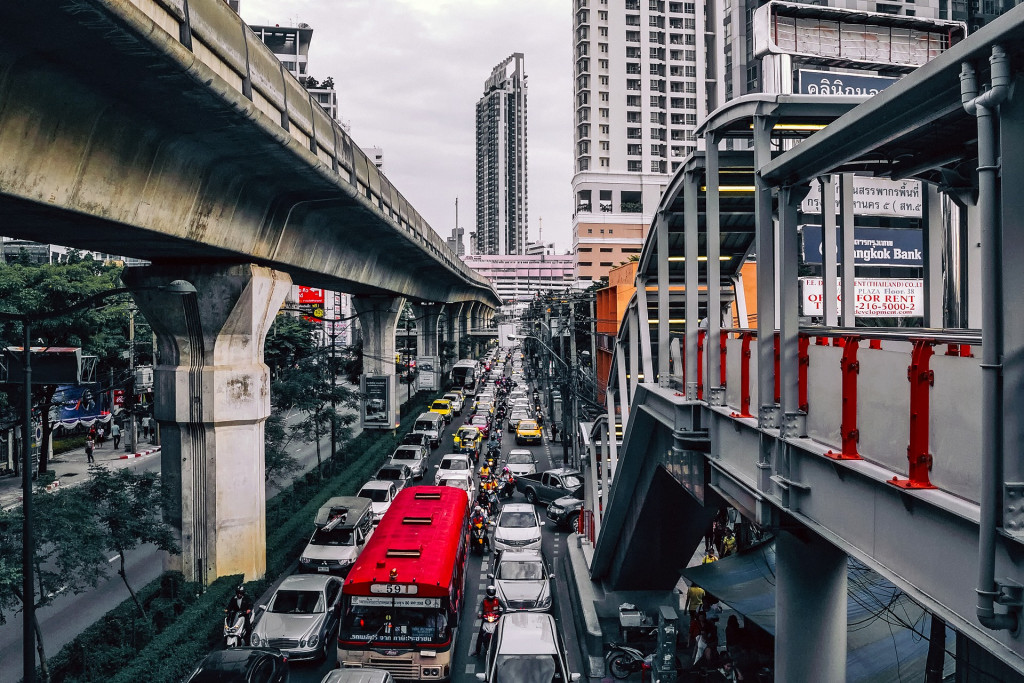
Q: How did you get involved with the UN Global Compact Cities Programme? What kind of work do you do there as global advisor?
A: I met one of the former directors and was very intrigued by the methodology that he produced, which is not the methodology they really use now. I’ve been working with him on a few projects in the Caribbean and he invited me to become one of the global advisors. Whenever there’s a very specific question from an actor anywhere in the world, I may be able to provide information or link up to someone that I know. Then it gets transcribed to me or one of the other people. I also, at times, advise the organization on which direction they should take. What I also do is sometimes try to connect. For example, there was a partner here from the Water Institute in the north of the Netherlands who wanted to become a partner and I connect them to the right people. I have to admit that, for the past year and a half, things have been very silent. There, I’m not really doing that much. There’s increasingly knowledge produced within that specific institution, and they’re kind of shifting to working more directly with city municipalities and less with a diverse range of academic partners.
Q: Is this a positive shift?
A: Yes and no. I think city municipalities really need to take a leading role in dealing with environmental questions. First of all, you cannot expect a national government to produce local solutions. Also, increasingly depending on the type of the city, there’s extreme combinations of problems that come together in specific urban areas: tourism and Airbnb. They come together in very specific cities. And I really believe that local governments need to take a leading role and should move away from leaving things up to the private sector. I believe that’s over. You need to formulate a vision and lead. However, a municipality has local partners with whom it should and needs to cooperate, like citizens and the private sector. You sometimes need to be aware that networks of municipal co-operations are not the answer to environmental issues. That’s part of it, but it’s not where action should stop. The fact that you are a member of C40 (The C40 Cities Climate Leadership Group), or something like that, does not mean that you’re addressing climate issues. You’re in a network that talks about climate issues, but that’s something else. You need to take greater leadership than what has happened in the past, but there are other partners that should be included.
Q: You wrote in your research on “Smart Urbanism” that “the urban is not confined to the administrative boundaries of a city.” Can you elaborate on this? Why is this fact crucial to building smart cities?
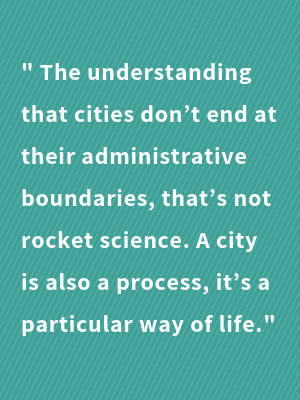 A: The understanding that cities don’t end at their administrative boundaries, that’s not rocket science. A city is also a process, it’s a particular way of life. My issue with much of smart urbanism is that it often includes the implementation of a range of one or more “smart city” projects or policies. It’s a policy approach. Because it is a policy, what you often see is a private sector policy, as coined by IBM, working in cooperation with a municipality and other partners to organize a city-based project. From that understanding comes the idea that, often, these projects are very much confined within city boundaries because that’s where the municipality has a say. I think smart city projects can be quite problematic and we need to build up our understandings of where these projects come from and what they actually do. You now often see that most of the research we rely on is more policy evaluation, which basically focuses on a project done as planned and the results within the area of focus.
A: The understanding that cities don’t end at their administrative boundaries, that’s not rocket science. A city is also a process, it’s a particular way of life. My issue with much of smart urbanism is that it often includes the implementation of a range of one or more “smart city” projects or policies. It’s a policy approach. Because it is a policy, what you often see is a private sector policy, as coined by IBM, working in cooperation with a municipality and other partners to organize a city-based project. From that understanding comes the idea that, often, these projects are very much confined within city boundaries because that’s where the municipality has a say. I think smart city projects can be quite problematic and we need to build up our understandings of where these projects come from and what they actually do. You now often see that most of the research we rely on is more policy evaluation, which basically focuses on a project done as planned and the results within the area of focus.
What we argue in “Elaborating the urbanism in smart urbanism” is that if you want to get a more integral or holistic understanding of what smart city policies do, you need to do more than that. You need to understand what implications are of a specific project outside of city boundaries. You can think about, for example, when you have a smart transport system. What does it do to traffic just outside the city boundaries? What about the water provision just outside of the city? It might be very smart to get rid of all kinds of polluting industries as part of a smart city. If you just dump them outside of the city boundary, then you’re just moving away the problems.
Q: You mentioned that each city is different and requires different solutions. I’ve read coverage claiming that we can look to Dutch cities like Rotterdam as we face climate change. Do you disagree?
A: It might be a good idea because there are lots of solutions developed here that work extremely well in this context. I think there is lots of knowledge and procedural understandings of how you come to develop these projects that can be extremely useful. I’m saying that the exact Solution A might not be working in Baton Rouge. The way it has been implemented in the Netherlands worked because it fit this context, in terms of government and socio-economic structures. You really need to see and rethink and include those kinds of questions in how you develop and implement a solution. You always need to tweak it to make sure it is embedded in a local context. Then you might end up with a completely different solution. It might still be that the types of questions and information and knowledge that some of these technicians bring in is extremely useful and can also be applied to another context. But you need to use it to develop a locally specific solution to a locally specific problem. In the wider sense, it’s an important debate but much more of an urban studies debate. For a long time, much of the development of urban theory was based on cities in the U.S. and Western Europe with very few examples for all kind of diverse aspects in different cities. Cities in the Global South have not been included.
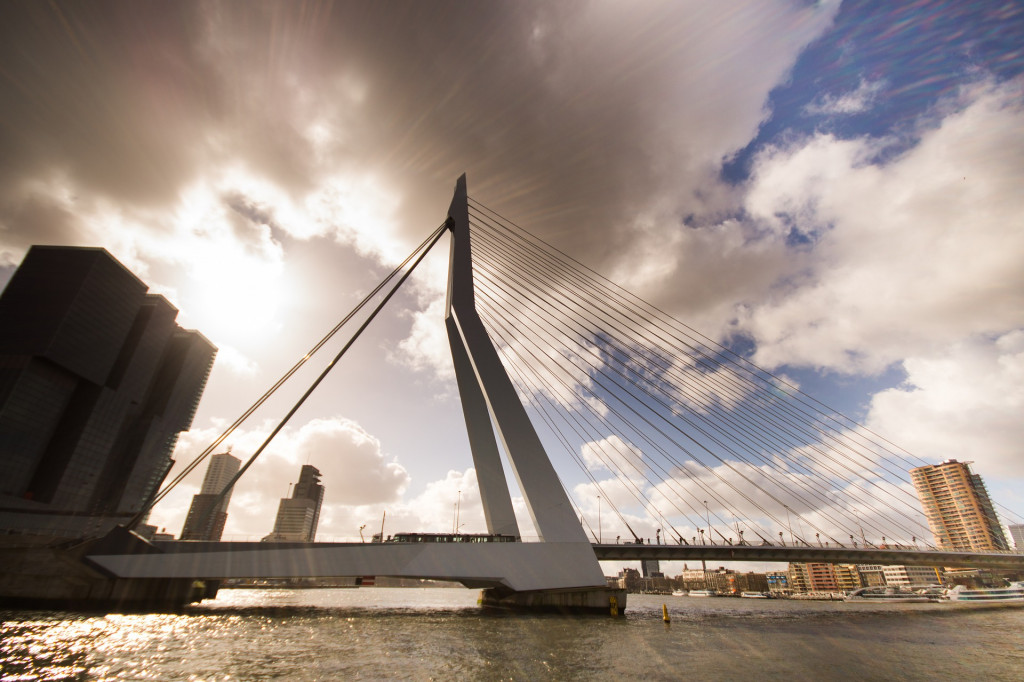
Q: What would you like to see happen in the future of urban planning?
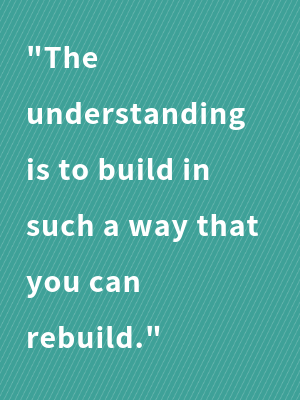 A: I would very much hope that a more visionary and integral approach to planning would become more central. I think actual developments are very area-specific. I would want a vision of the type of city where you want to go that produces certain parameters you need to work with; then you transpire that to local practices and plans. I would want people to base climate-related solutions in the Caribbean much more on historical practices and observations and produce more out-of-the-box thinking. For example, last year there was a big hurricane on St. Martin. In thinking about how to make the island more resilient, the idea is to make better houses that don’t get torn by the next major hurricane. The understanding is to build in such a way that you can rebuild. All houses can have a place to store valuables and you accept that the type of material you use for the house is going to be torn down in five to ten years. It’s going to be cheap and preferably reusable. That changes how we anticipate these kinds of projects.
A: I would very much hope that a more visionary and integral approach to planning would become more central. I think actual developments are very area-specific. I would want a vision of the type of city where you want to go that produces certain parameters you need to work with; then you transpire that to local practices and plans. I would want people to base climate-related solutions in the Caribbean much more on historical practices and observations and produce more out-of-the-box thinking. For example, last year there was a big hurricane on St. Martin. In thinking about how to make the island more resilient, the idea is to make better houses that don’t get torn by the next major hurricane. The understanding is to build in such a way that you can rebuild. All houses can have a place to store valuables and you accept that the type of material you use for the house is going to be torn down in five to ten years. It’s going to be cheap and preferably reusable. That changes how we anticipate these kinds of projects.
And finally, I’m a social scientist and urban thinking has many technicians involved. There’s been people who have been saying that the technological developments to deal with climate change are there. The real problem is that many questions are social and political. That also means you develop a different approach. You don’t solve climate change with technology, you solve it with technology being used and implemented by people. In addressing urban questions you bring together different types of actors but also try to combine different disciplines and even combine academic knowledge with technical knowledge and even laymen knowledge. I think these are super exciting processes because i really believe that is a step forward to understand problems and being able to produce solutions.
Q: Do you believe our concept of ‘the city’ and urbanity will change as we adapt to climate change?
A: It will become much more clear that, as citizens communicate, people produce the city and the city is a lived environment. We see that cities are increasingly popular locations for people to live but you also see some interesting innovations which are sometimes very low-tech, they have to do with changing a way of life or how people communicate with each other. It’s particularly those kinds of innovations that I see becoming more important. People produce a city, it’s not being built; it’s being produced by people. It also I think is going to bring forward the importance of networks, of relations, of being connected to a place. It’s dimensions of a city that we tend to overlook a bit more when we talk about a city as a form of hyper-individualism and anonymity. That is going to change a bit.